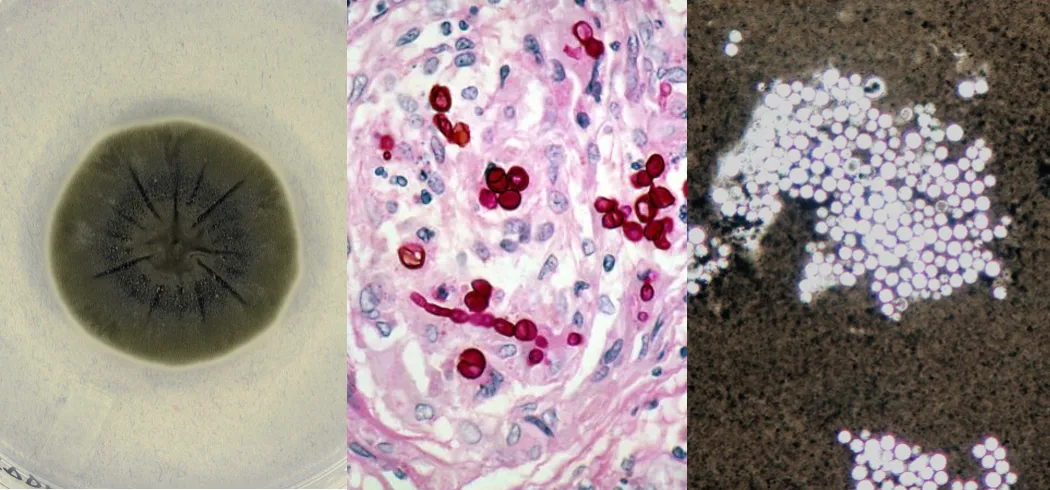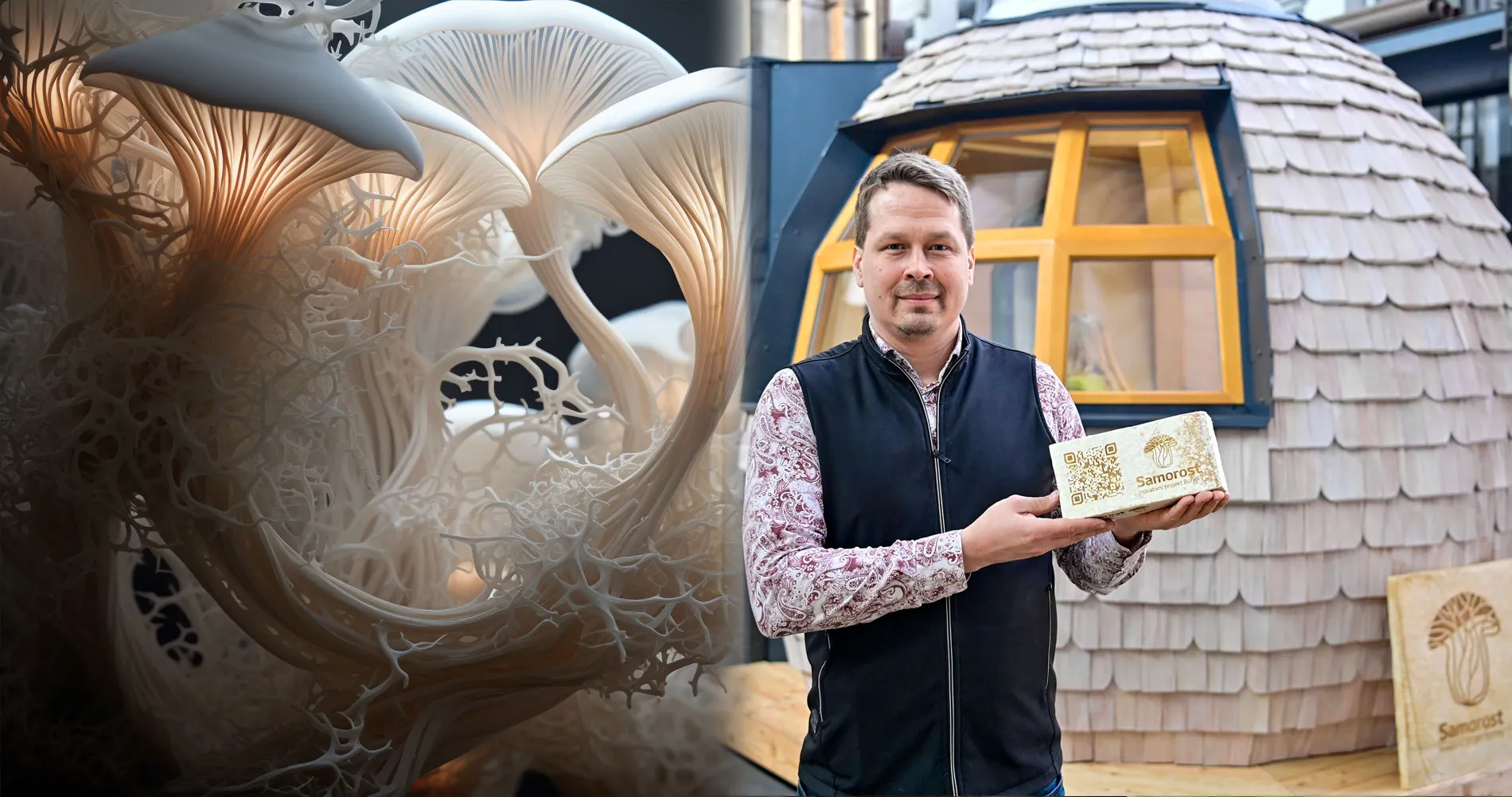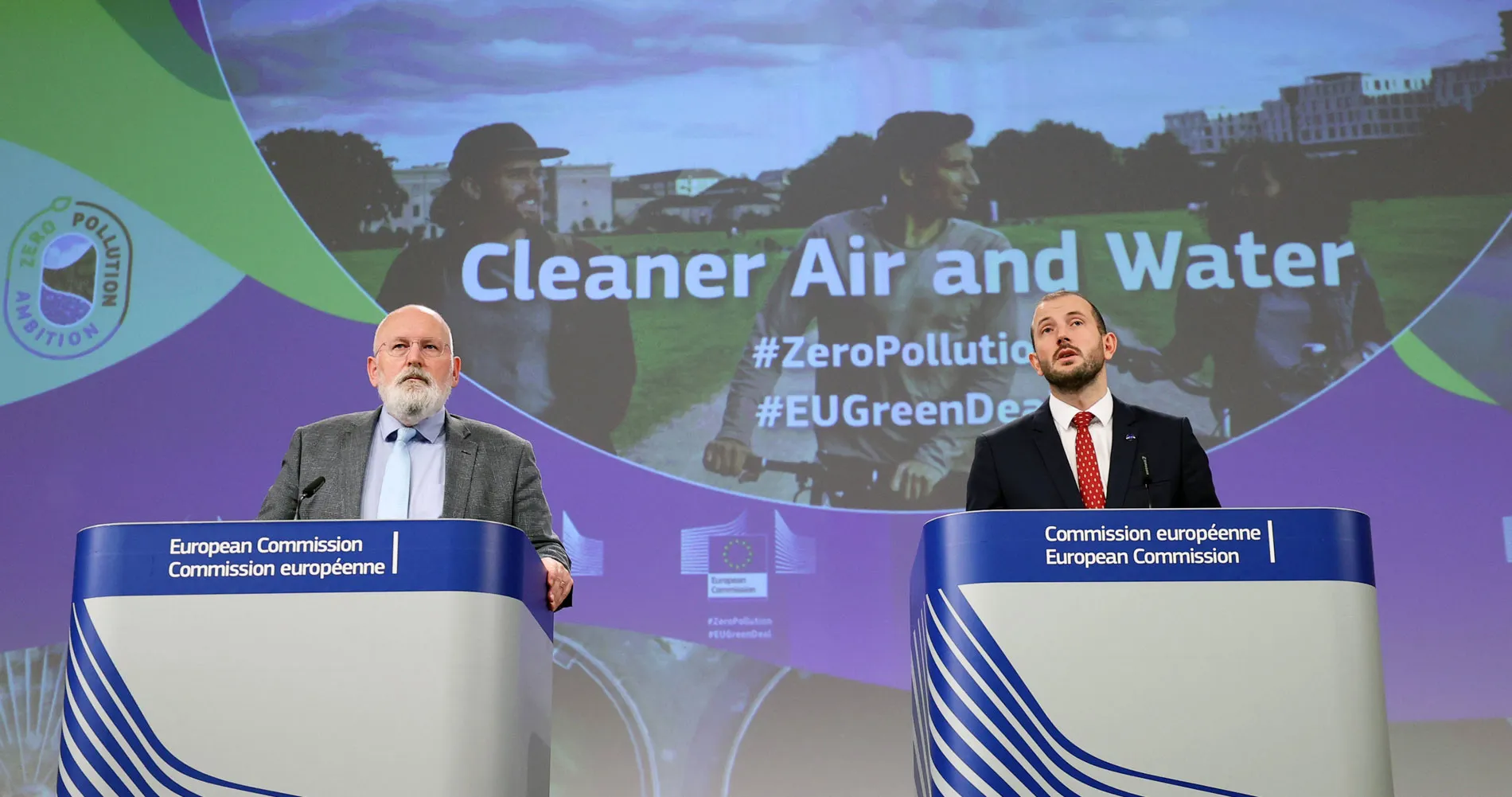In the aftermath of the Chernobyl disaster, one of the most surprising developments in environmental science has come from an unlikely source: fungi. Despite the deadly conditions, life has not merely persisted in the 30 km Exclusion Zone around the destroyed reactor—it has evolved. Researchers have discovered melanized fungi that appear to thrive in radiation which are now being explored for bioremediation—the use of living organisms to remove or neutralize pollutants, including radioactivity.
Lukas Barcherini Peter
14 May 2025
Chinese version | German version
On the 26th of April 1986, Reactor No. 4 at the Chernobyl Nuclear Power Plant in northern Ukraine exploded during a late-night safety test that went wrong. In the aftermath, scientists inspecting the wreckage found black fungi growing on the walls and surfaces of the damaged facility. These were not typical molds, but melanized fungi—organisms rich in melanin, the same pigment that gives human skin its color and helps shield it from ultraviolet radiation. Fungi species such as Cladosporium sphaerospermum, Wangiella dermatitidis, and Cryptococcus neoformans soon gained attention for their ability to survive, and even thrive, in high-radiation environments.
The fungi’s dark pigmentation is more than superficial. Researchers found that melanin did not just shield the fungi—it enabled them to convert radiation into chemical energy in a process similar to photosynthesis. Coined as “radiosynthesis,” this phenomenon involves melanin absorbing ionizing radiation – instead of sunlight. Ionizing radiation is powerful enough to strip electrons from atoms, disrupting the balance between positively charged protons and negatively charged electrons. Atoms with this imbalance become ions. The melanin enhances this electronic behavior within the fungal cell, being used to drive growth-related chemical processes. In other words, the freed electrons become available as carriers of energy and boost the fungi’s metabolism.
 Cellular images of three melanized fungi known for their ability to thrive in high-radiation environments. From left to right: Cladosporium sphaerospermum (colony morphology), Wangiella dermatitidis (histological section), and Cryptococcus neoformans (yeast cells). These fungi gained attention after being discovered growing on the walls of the Chernobyl Nuclear Power Plant, where they appeared to use ionizing radiation as an energy source—a phenomenon known as radiotrophy. © https://en.wikipedia.org/wiki/Cladosporium_sphaerospermum, https://en.wikipedia.org/wiki/Exophiala_dermatitidis, https://en.wikipedia.org/wiki/Cryptococcus_neoformans
Cellular images of three melanized fungi known for their ability to thrive in high-radiation environments. From left to right: Cladosporium sphaerospermum (colony morphology), Wangiella dermatitidis (histological section), and Cryptococcus neoformans (yeast cells). These fungi gained attention after being discovered growing on the walls of the Chernobyl Nuclear Power Plant, where they appeared to use ionizing radiation as an energy source—a phenomenon known as radiotrophy. © https://en.wikipedia.org/wiki/Cladosporium_sphaerospermum, https://en.wikipedia.org/wiki/Exophiala_dermatitidis, https://en.wikipedia.org/wiki/Cryptococcus_neoformans
For years after the initial discovery, the idea that organisms could convert radiation into metabolic energy remained speculative. That changed in the early 2000s, when Dr. Ekaterina Dadachova and her team for extremophile biology – the branch of biology studying organisms living in extreme environments that are typically considered inhospitable to most life – at the Canadian University of Saskatchewan provided the first strong experimental evidence. Dadachova’s 2007 study (Dadachova E, et al., PLoS ONE 2(5): e457) confirmed the theory of “radiosynthesis” and sparked global scientific interest in the fungi’s broader biological and environmental potential. Particularly the question of whether fungi can remediate the radioactive waste burden, when absorbing the ionizing radiation, and to what extent.
This research showed that melanized fungi exposed to gamma radiation, the most powerful and penetrative form, exhibited faster growth and increased metabolic activity. The findings suggested that melanin plays an active role in converting ionizing radiation into usable energy.
Melanin functions much like a natural semiconductor. When exposed to radiation, its structure shifts slightly, enhancing its ability to transfer small amounts of energy (electrons) through the fungal cell. It is similar to how melted chocolate spreads more easily than a solid bar. This energy then powers essential processes such as growth and cellular repair. In this way, the fungi do not simply withstand radiation. They appear to repurpose it.
Current findings suggest that melanized fungi can play a supportive role in remediation. Unlike mechanical or chemical approaches that physically remove or neutralize radioactive isotopes, these fungi stabilize contaminated substrates. Substrates are the surfaces on which organisms grow. They colonize radioactive areas and bind with radioactive particles that emit ionizing radiation. These fungi could reduce the spread of radiotoxic materials through wind, erosion, or dustfly. In principle, the fungi act and look like a sponge.
Other laboratory and field studies have also come to similar conclusions: fungal biomass can absorb and bind certain toxic radionuclides, including cesium-137 and strontium-90. A 2012 study, for example, observed cesium uptake by melanized fungi in contaminated soils in the Fukushima Prefecture (Suzuki et al., 2022). While this suggests an ability to bind radioactive particles, clear evidence of a significant, standalone reduction in environmental radiation due to fungi remains limited. One of the most prominent studies in this field conclude that, after all, fungi act like biological sponges—absorbing and containing radionuclides rather than neutralizing them (Geoffrey M., Mycological Research, 2007). Only if the fungal biomass is harvested and safely disposed of can it contribute meaningfully to lowering the radioactive load at contaminated sites.
The potential becomes even more promising when fungi are paired with other bioremediation tools, such as certain plants and bacteria. One standout is the so-called “Conan bacterium” (Deinococcus radiodurans), which can survive radiation doses over 3000 times greater than what is lethal to humans. Scientists continue working to genetically modify this bacterium to bind radioactive isotopes and produce enzymes that convert toxic compounds into less harmful forms. Though there is no established evidence of direct metabolic interaction between fungi and bacterium, their combined use supports a synergistic ecological strategy—one that mimics natural recovery by restoring degraded soils, reducing radiotoxicity, and creating conditions for broader ecological succession in places like Chernobyl.
While more long-term field data is needed, current research places melanized fungi in the category of “promising, but not yet definitive”. Still, their resilience, low maintenance needs, and ability to self-replicate make them a compelling option for long-term containment strategies.
What began as a curious observation in the ruins of Chernobyl has grown into a revolutionary idea: that life can not only survive radiation, but harness it and remediate the negative impacts it entails. These fungi might offer a novel method to deal with nuclear disasters by reducing the radioactive burden. Remarkably, they require little more than paced cultivation and strategic placement to begin their work.






















